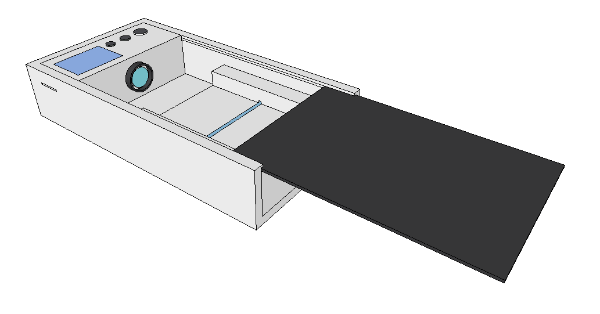BME100 f2016:Group8 W1030AM L6
| Home People Lab Write-Up 1 | Lab Write-Up 2 | Lab Write-Up 3 Lab Write-Up 4 | Lab Write-Up 5 | Lab Write-Up 6 Course Logistics For Instructors Photos Wiki Editing Help | ||||||
|
OUR COMPANY
Our Brand Name LAB 6 WRITE-UPBayesian StatisticsOverview of the Original Diagnosis System 15 teams of about 4-6 students were each given 2 patients to diagnose for a total of 30 patients being diagnosed. Each team was also given a positive and negative control to compare the patients to. After the patients were diagnosed or labeled as inconclusive, each group submitted their findings to the same Excel sheet so overall statistics could be obtained. There were many things put into place to prevent error like the fact that each patient had 3 different samples. The PCR machine had easy to use settings that were predetermined to complete PCR which reduced human error using the machine. For every single drop used for ImageJ, patients and controls included, 3 pictures were taken to ensure the results matched up and one picture of the same sample was the same as the others. The ImageJ calibration controls were easy to use and did all of the hard math for us which further reduced human error- the most we had to do was crop out the image of the drop. The statistics for all of the groups put together showed there were quite a few errors made throughout this lab. There were a total of 3 inconclusive results, 4 blank results, and 23 successful conclusions. This means that only 77% of the results gathered were able to fully contribute to the data because there was an error in the unsuccessful conclusions. Our group had one unsuccessful conclusion. We believe that a problem with the pipette was likely the cause of our unsuccessful conclusion. We are unsure if this was because of human error or because the pipette didn't work as intended likely from picking up air bubbles.
2. While using the fluorimeter, the lid may not have been all the way shut when the picture was taken resulting in "bad" data. 3. While using the pipette, not all of the solution was gathered sometimes as a small drop of solution would remain at the bottom of the test tube which results in a smaller total volume than intended. Intro to Computer-Aided Design3D Modeling Our team used a software called Google Sketch-Up which is a free software made by Google for designing 3D objects. Our team found that using this software was much easier than using SOLIDWORKS as solid works is more geared toward engineering prints and advanced modeling. Our objective with this model was to simple create a general concept rendering of what our fluorimeter apparatus might look like. Google sketchup is specifically designed for creators who have a quick and simple workflow. This is a free software which is very accessible to those looking for an introduction to 3D modeling.
This image is our design of the fluorimter that will reduce human error. It is simple and easy to use. The idea was to combine the fluorimeter into one unit. The advantage of that is that the camera is stationary that will provide consistent pictures unlike the ones taken using our Iphones. Our design is completely enclosed when it takes the picture, so that there is no way light will affect the picture. It also has an SD card slot for a convenient transfer of files to a computer.
Feature 1: ConsumablesOur new design of the fluorimeter would not affect how any of the consumables are being used. Consumables that would be included in our package are: a pipette, tips for the pipette, test tubes, buffer, green solution, glass slides, and a test tube tray. All of the items included in our package are the consumables that are essential to the PCR reaction so they needed to be included. Anything not in the package could easily be obtained by the customer elsewhere to perform the reaction.
Feature 2: Hardware - PCR Machine & FluorimeterThe PCR machine will be used as intended since our group will not be making no modifications to it. The fluorimeter is being modified and will be used in just about the same way as before, but now it is more user friendly and accurate.
| ||||||





